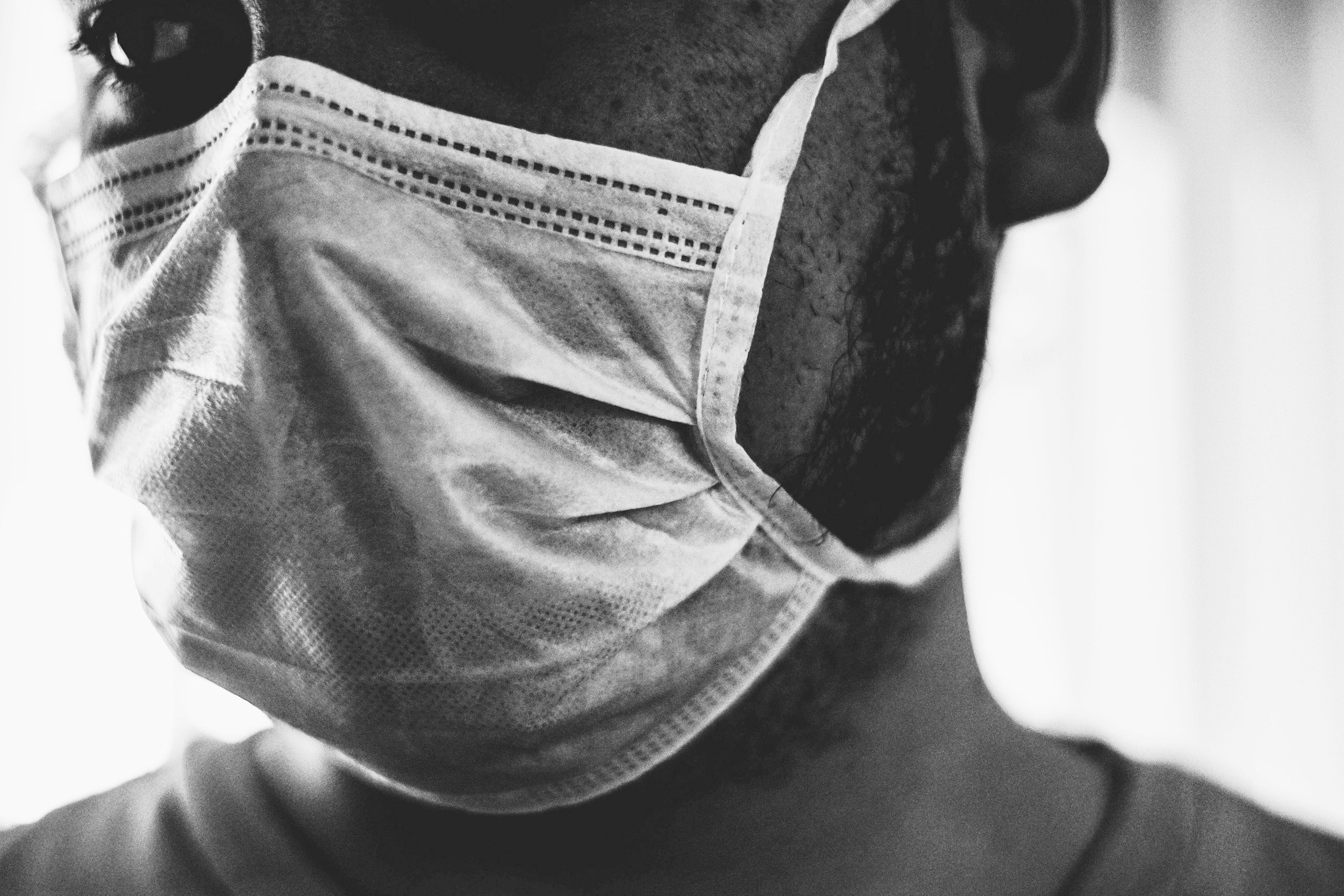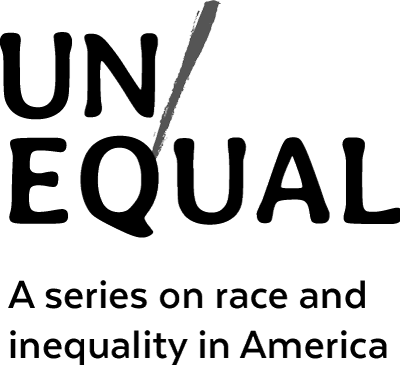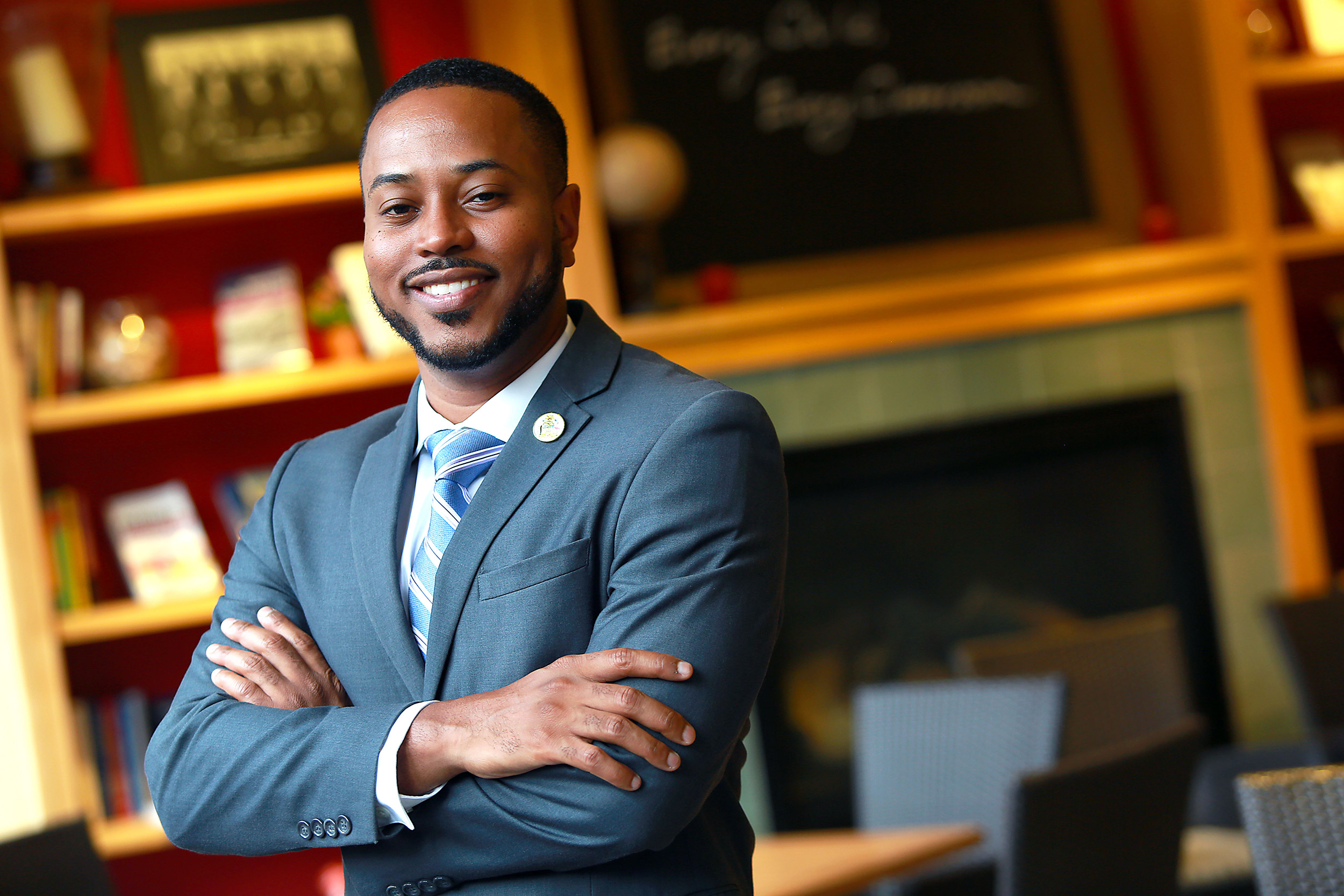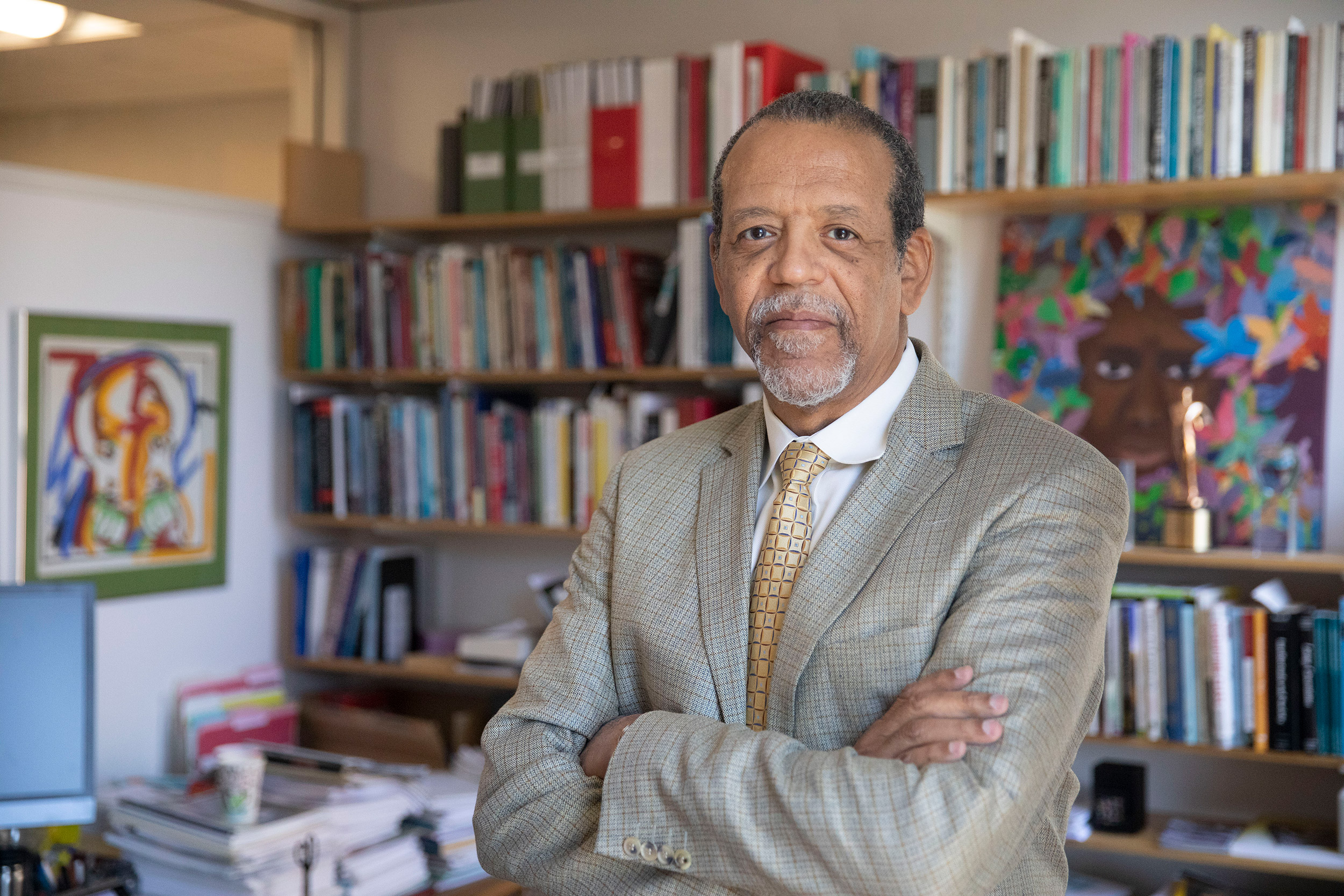
Tai’s Captures/Unsplash
With COVID spread, ‘racism — not race — is the risk factor’
Harvard experts take a hard look at environmental inequities

“Unequal” is a multipart series highlighting the work of Harvard faculty, staff, students, alumni, and researchers on issues of race and inequality across the U.S. The third chapter, “Environmental Exposure,” explores the experience of people of color with environmental injustice in the nation.
The pandemic has been a wake-up call, says Aaron Bernstein, interim director of the Center for Climate, Health, and the Global Environment at the Harvard T.H. Chan School of Public Health. It has highlighted the nation’s deficiencies in knowledge and preparation, as well as longstanding inequities in various areas of society — one of the most glaring of which has been environmental injustice involving communities of color.
Since the outset of the COVID-19 outbreak, public health experts have noted the disproportionate toll on Black and brown Americans. Those groups are at much greater risk of getting infected than white people; they are two to three times likelier to be hospitalized, and twice as likely to die, according to recent estimates from the U.S. Centers for Disease Control.
Faculty and researchers at Harvard and elsewhere agree that the disparity is a result of interrelated circumstances within the environments in which economically disadvantaged and minority populations live, reflecting systemic racism. The factors include aspects of the physical environment, such as greater exposure to pollution and less availability of healthy food. Just as important are the community environments of professional and social circles, where flexible work schedules, accessible and affordable health care, and reliable information all can make the difference between illness and health.
“Pandemics like COVID reveal in the most painful way what we need to fix in the world,” Bernstein said. “We have so many festering problems that have been too hard for many to see, until now. Our ‘built’ environment was built for cars, not people. Our food system was built for industry, not for health. And arguably our government, our policies were built to benefit white people before others. We poke along as best we can until a stress test, like COVID or climate change, rips these seams open.”
One of those “seams,” he says, is environmental injustice, which can be seen pointedly right now in the fallout of who breathes more polluted air in the U.S., and how that has affected health outcomes during the pandemic.
“Pandemics like COVID reveal in the most painful way what we need to fix in the world.”
Aaron Bernstein, Center for Climate, Health, and the Global Environment
Researchers have been looking at issues around environmental injustice since the ’70s. It began with findings about how communities of color, particularly lower-income ones, are more likely to be exposed to polluted air, water, and land than those in predominantly white areas, because they are much more likely to be near landfills, oil fields, waste sites, factories, and areas with high automobile traffic.
The reasons are both economic and political, results of intentional and unintentional discrimination. Essentially, so-called dirty industries and governments met with much less resistance to putting facilities and roads in neighborhoods where residents were not part of the decision-making process, and often lacked resources to effectively fight the moves.
Public health experts say that those racial disparities have contributed to higher rates of respiratory and cardiac conditions, both of which put COVID patients at higher risk of hospitalization or death. And a recent nationwide study by scientists at the Chan School found that people with COVID-19 who live in regions with high levels of air pollution are more likely to die from the disease than people who live in less-polluted areas.
Researchers looked at data from 3,080 counties across the nation and discovered that higher levels of the tiny particles in air known as PM 2.5 were linked with higher death rates from the disease. “The results of this paper suggest that long-term exposure to air pollution increases vulnerability to experiencing the most severe COVID-19 outcomes,” the authors wrote.
(The Biden administration acknowledged many of these issues in parts of the president’s $2.3 trillion infrastructure plan and in executive actions that lay out steps “to advance environmental justice,” including things like sealing off leaking oil and gas wells; getting rid of lead water pipes; and renovating schools, child-care centers, and community colleges. Biden vowed during his campaign to address disproportionate air pollution in communities of color and clean up “old power plants and industrial facilities, landfills, abandoned mines.” His new proposals also aim at fighting climate change, which tends to impact poor and minority communities more.)
“Pollution and poverty are close friends,” Bernstein said. “The poor and people of color are more likely to live near roadways and other pollution sources. … We have long known that air pollution causes people to die early, damages brains, and promotes lung cancer, and likely increases risk of diabetes. Past research has found that air pollution makes people more likely to get lung infections. And evidence is now mounting, including from researchers at Harvard Chan, that people who breathe air pollution are more likely to die from COVID.”

Associate Professor of Education Peter Q. Blair and his research group have teamed with the nonprofit Opportunity at Work to create an online platform that identifies STARs — job applicants who are “skilled through alternative routes.”
Jill Anderson/HGSE
A commentary last summer in the NEJM Catalyst │Innovations in Care Delivery by Thomas B. Sequist, professor of medicine and health care policy at Harvard Medical School, took a broader look at COVID rates in the Navajo Nation, which has high rates of poverty (43 percent) and a population of 180,000 people across New Mexico, Arizona, and Utah, and in Chelsea, Mass., a densely populated city near Boston where two-thirds of the population identifies as Latinx and about 19 percent of residents live below the federal poverty level.
Sequist, a member of the Taos Pueblo tribe in New Mexico who has worked to improve health care for Native peoples for 20 years, said that the seemingly disparate rural and urban communities of color shared some characteristics that led to the rates of more than 3,500 per 100,000 residents in the Navajo Nation and more than 7,000 cases per 100,000 residents in Chelsea — rates that were among the highest in the nation.
He wrote that a series of environmental factors contributed heavily to the problem, including crowded living conditions forced by poverty, which made social distancing impossible; lack of healthy food options (he said both communities are “food deserts” due to their limited options for well-stocked grocery stores); problems with access to medical care; and greater prevalence of complicating conditions, such as diabetes, heart failure, and kidney disease. In addition, residents of these communities tended to have low-wage, “essential worker” positions, which meant they could not work from home and often had to take public transportation to get to their jobs, putting them at higher risk of infection.
“The rapid spread of COVID among communities of color is not because race or ethnicity is a risk factor for disease spread,” Sequist wrote. “Racism — not race — is the risk factor for spread.”
In recent years, advocates of environmental justice have come to recognize the links between economic, environmental, and health issues. And the pandemic has focused attention on specific trouble spots, including the workplace and the physical environment for communities of color, which tend to be segregated and with fewer employment options within or near their homes. Clearly the work climate affects who is more likely to get sick, according to Daniel Schneider, professor of public policy at the Kennedy School.
“We found that it took months for employers to implement mask mandates and provide masks to their workers. And by fall we found out there is another problem, namely customers. … So there is a certain powerlessness that workers feel.”
Daniel Schneider, Harvard Kennedy School
“COVID has shown that lower-income workers in the service sector are essential to our economy,” Schneider says. “They are playing a crucial role, but they are dealing with crummy jobs — now and in pre-pandemic times. Wage matters a great deal, but there are other aspects of job quality that also affect a worker’s well-being.”
Schneider is co-director of the Shift Project, a joint initiative at the Harvard Kennedy School and the University of California, San Francisco. Shift, he says, “has done surveys of hourly workers at 150 of the economy’s larger companies in the retail, food service, grocery, big box, delivery, and fulfillment sectors. We surveyed workers not only about how much they earn, but also do they get sick days, or paid medical leave.” The group’s aim is to help policymakers and firms find the best ways to improve job quality.
Discrimination, says Schneider, can be a factor in how management decisions are made. “Workers of color, particularly women of color, are over-represented in many service sector occupations. It would be one thing if all workers were equally susceptible to bad schedules and lack of leave, but even within this sector there are pretty stark racial and gender inequalities. There is absolutely a wage gap but there is also a scheduling gap. Workers of color, especially women, have less-predictable schedules than their white counterparts. With something like scheduling there is an awful lot of managerial discretion: Who gets sent home at the last minute? Who is the last to get time off when they need it? And women of color are ending up on the wrong side of that.”
While some workers have simply lost their jobs, others have seen new dangers in the workplace. “In sectors like big box stores, grocery stores, hardware stores, and pharmacies, you continue to go to work — which is good in a way, but now you contend with serious risks and hazards. We found that it took months for employers to implement mask mandates and provide masks to their workers. And by fall we found out there is another problem, namely customers. Do they wear masks, do they take 6 feet of distance? So there is a certain powerlessness that workers feel.”
One solution, proposed by Associate Professor of Education Peter Q. Blair, is to promote wider access to better-paying jobs. One reason minority populations have the deck stacked against them, he said, is that they are less likely to have a college degree — and so are more likely to be passed over in job searches. “When you look at the COVID disruption, all of the existing fissures in society just got exacerbated.”

Ronald Ferguson, adjunct lecturer in public policy at the Kennedy School, looked at the phenomenon of statistical discrimination, in which assumptions are made about a racial or social group’s behavior — sometimes with disastrous results.
Kris Snibe/Harvard file photo
In response, Blair and his research group, BE-Lab, have teamed with the nonprofit Opportunity at Work to create an online platform that identifies STARs — job applicants who are “skilled through alternative routes.” As he explains, many workers without college degrees have developed comparable skills through work experience. “In the last 40 years we’ve seen real stagnant wages for workers with [only] high school degrees. We make the argument that everyone learns on the job. For instance, I learned to teach through getting a faculty job. I didn’t learn that in college.”
The goal, he says, is a database that targets specific job skills that an applicant has gained through work experience. “For one example, if you are going to be a customer-service representative, one of the required skills might be problem-solving, or team-working. The algorithm we’ve developed says, ‘Let’s calculate the skill distance between where a worker’s original job is, and what would now qualify them for higher wages.’ You shouldn’t need to look at the bachelor’s degree.”
Blair says he’s already had discussions with 47 different Fortune 500 companies that have agreed to work with him. And his work dovetails with recent developments in the business world — notably an executive order signed by former President Donald Trump last summer, asking companies to hire based on experience instead of degrees. “There are now 71 million Americans who have completed high school and not college. How do you conceptualize the way we measure skills, so they can be rewarded? We’re part of the movement working to change that.”
Another group at the Chan School has been working directly with local communities to make school environments safer. The Healthy Buildings for Health program has published a guide (available online at forhealth.org) that schools can use to check ventilation rates in classrooms, and to calculate the efficiency of air cleaners and the level of CO2 concentration in school buildings. The site also provides a list of recommendations for schools that reopened — ranging from preventive measures like installing plexiglass barriers to mental health measures like re-introducing modified versions of sports and arts classes.
Meanwhile, there are also changes that need to be examined at the interpersonal level. Ronald Ferguson, adjunct lecturer in public policy at the Kennedy School, says that a family’s defenses against COVID can depend on the “buffers” they have in place, which come partly from how well institutions around them are designed to help them cope.
“A lot of the racial disparities are really socioeconomic disparities,” Ferguson says. “People of color are more likely to have lower incomes or work in jobs that don’t have as many protections. And there still is discrimination, so when it is a matter of judgment about whether to give a particular advantage or consideration, where discretion is involved, some folks of color, Black folks in particular, are less likely to get the benefit of the doubt. In health services there is some evidence that Black patients aren’t given as much consideration.”
He refers to the phenomenon of statistical discrimination, in which assumptions are made about a racial or social group’s behavior — sometimes with disastrous results. “There is evidence, for example, that some physicians assume a Black patient is unlikely to take their medicine or even that they need less of it. For example, there is a myth that Black people have less-sensitive nerve endings. So, you get doctors who offer Black patients less medicine based on such assumptions.”
More generally, he said race-based assumptions can lead professionals with responsibility for providing help or care to treat people of color differently. He also cited a recent viral video, made by a Black female COVID patient in her hospital bed, whose doctor minimized her symptoms and told her to go home and rest — even though he realized she was a physician herself. “Sometimes people like that white male doctor can experience psychological dissonance; they have a hard time coping with the idea that a Black woman like that patient could have the same status as they do.”
Also important, he says, is the fact of racially segregated social networks.
“Peoples’ access to information and resources are going to be limited by who they know,” he said. “The fact that our society is as segregated as it is has set up a situation where many whites and wealthier people have social network ties to more information — other resources, on average, than people of color and poor folks do. And what I am suggesting is that white poor folks are more likely to have upper-middle-class relatives than Black poor folks are. Upper-middle-class relatives are able to provide a buffer against periods like this. I have become that buffer in my own extended family. But we know there are a lot of people who don’t have anybody to call. And not having anybody to call is surely more common among folks of color.”





